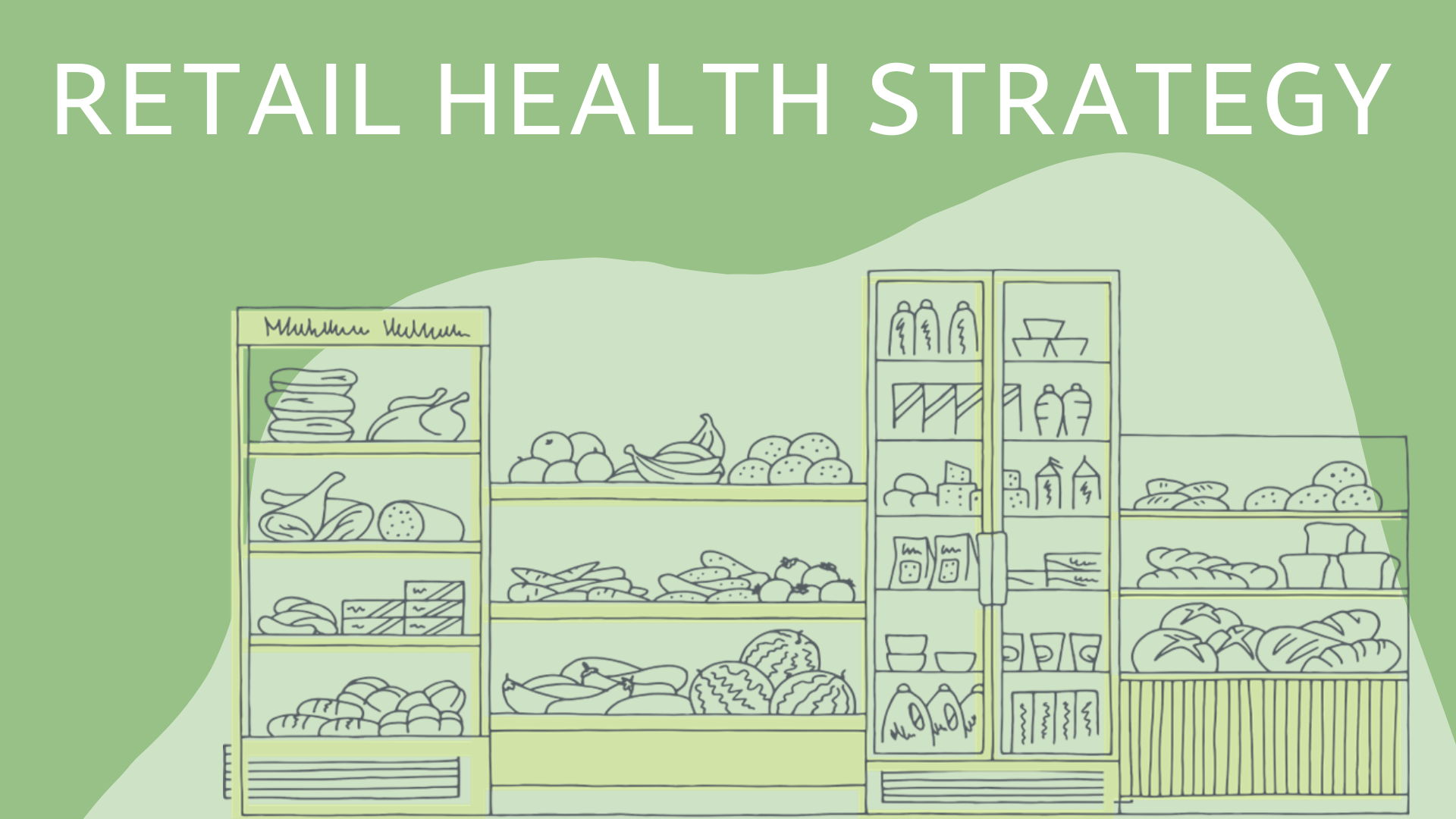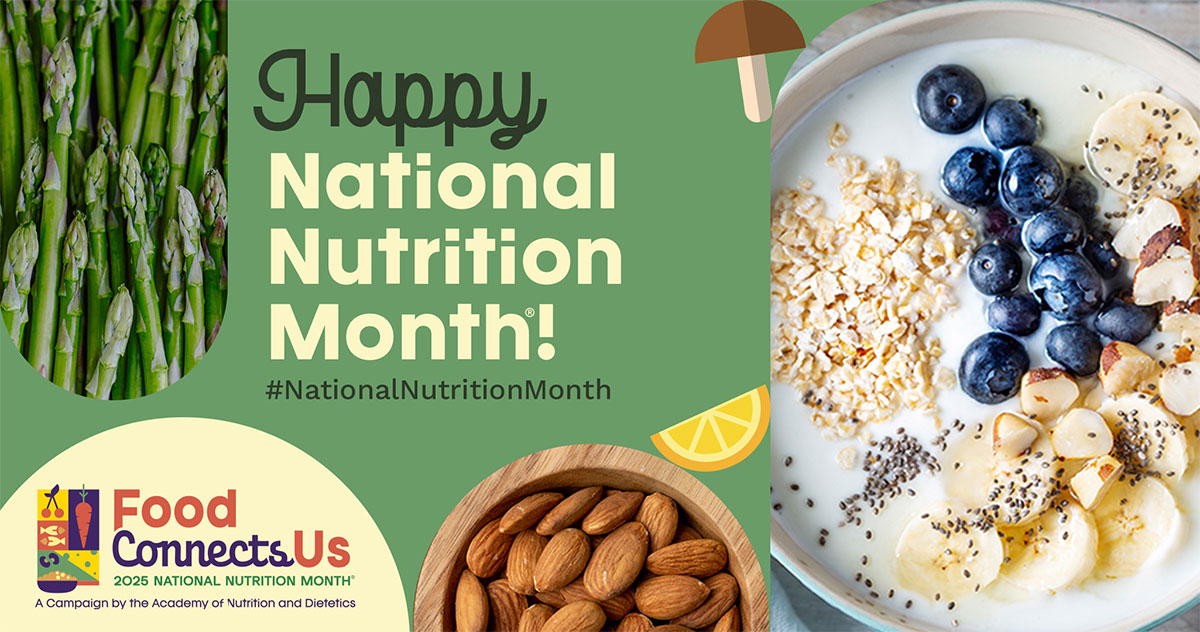By Krystal Register, MS, RDN, LDN, Senior Director, Health & Well-being, FMI

Supporting Consumer Conversations
Amid many current conversations around food, nutrients, science, and health, it is important to remain focused on empowering consumers to make healthy choices. We acknowledge our members across the food industry who continue to encourage balance, moderation and variety in overall healthy patterns of eating and remain steadfast in reaching consumers with evidence-based nutrition messaging.
The Big Picture = Balance
As a registered dietitian nutritionist (RDN) with a career spanning clinical care, personal coaching, supermarket strategy, and now the realm of the entire food industry, it seems to me like an appropriate time to take a deep breath and a purposeful step back to consider not just one food or beverage over the other, but rather to take a pulse check on the big picture. This is tricky, because nutrition science plays out differently for every individual, so there really is no one-size-fits-all view.
What does an overall healthy pattern of eating look like daily, weekly, seasonally? Can nutritious choices be balanced with satisfying, delicious favorites? Yes - there is room for the inclusion of small, sweet enhancements and other tasty indulgences whether they deliver added sugar, artificial sweeteners, saturated fat and/or sodium. When consumed in moderation with nutrient rich foods, these can all be part of a healthy pattern of eating that can be balanced, personal, enjoyable, and aligned with the Dietary Guidelines for Americans.
The Food as Medicine Connection
With growing consumer interest in connecting the science of food and nutrition to overall health, the Food as Medicine opportunity in the retail setting is present and powerful. FMI’s Board Policy Statement on Food as Medicine supports this opportunity to responsibly implement programs and innovate across the industry to help consumers leverage food for health while emphasizing the importance of culture, family meals, and the enjoyment of food. Registered dietitians working across the food industry develop and execute programs to reach consumers with food, nutrition and health messaging delivered both in-store and online for preventive purposes and to manage health conditions, like diabetes or heart disease.
Consumer Taste for Health
FMI research shows that consumers most frequently look for products with low sugar, no added sugar, and low sodium claims as they seek to achieve their health goals. And the food industry is innovating in response. We now see more products than ever before offering consumers options to better manage their sugar and calorie intake. For example, more than half of the typical beverage aisle is now low-calorie or zero calorie beverages. That includes drinks with artificial sweeteners and drinks that use no sweeteners at all, like seltzers.
Bottom line, as we sort through recent headlines seeking clarity and direction, it is ever important to recognize established safety measures across our food supply, and to reflect on the power of intentional choice and the opportunity to responsibly guide and empower consumers to shop, cook and eat for family needs and personal health.
Additional Information
*Recent Media on Aspartame: Recent media attention is based on conflicting information about the safety of aspartame, including two separate pending reports from agencies that are part of the World Health Organization. In one review, the International Agency for Research on Cancer (IARC) is expected to classify the artificial sweetener aspartame a possible carcinogen. The agency has four categories for classifying the cancer risk of certain foods, chemicals and goods: class 1 means the item can cause cancer; class 2a means it probably does; class 2b means it possibly does; and class 3 means it carries no cancer risk. The agency has decided to declare aspartame a class 2b carcinogen, meaning that it “possibly” causes cancer. Another review by the Joint Expert Committee on Food Additives (JECFA) is expected to reaffirm that aspartame is safe to consume at Acceptable Daily Intake levels. JECFA, a food safety agency within WHO, conducts comprehensive reviews of available research – including findings from IARC – and considers all relevant toxicological endpoints, including cancer risk, to fully assess potential effects on human health.
**Background Information on Aspartame: Aspartame is regulated as a food additive by the U.S. Food and Drug Administration (FDA) and it is generally recognized as safe. FDA states in its recently updated fact sheet, “Aspartame is one of the most studied food additives in the human food supply. To determine the safety of aspartame, FDA has reviewed more than 100 studies designed to identify possible toxic effects, including studies that assess effects on the reproductive and nervous systems, carcinogenicity, and metabolism.” FDA has established an Acceptable Daily Intake (ADI) for most sugar substitutes, which vary by sweetener and are based on body weight. The ADI for aspartame is 50 milligrams for each kilogram of body weight per day. For a 150-pound person, the ADI equates to ~3400 milligrams of aspartame. Note that a 12-oz can of diet soda contains around 200 milligrams of aspartame, so a 150-pound adult would fall within the ADI by consuming ~17 cans of diet soda a day.
The American Beverage Association also has aspartame facts and information on its website, https://www.safetyofaspartame.com/


 Industry Topics address your specific area of expertise with resources, reports, events and more.
Industry Topics address your specific area of expertise with resources, reports, events and more.
 Our Research covers consumer behavior and retail operation benchmarks so you can make informed business decisions.
Our Research covers consumer behavior and retail operation benchmarks so you can make informed business decisions.
 Events and Education including online and in-person help you advance your food retail career.
Events and Education including online and in-person help you advance your food retail career.
 Food Safety training, resources and guidance that help you create a company food safety culture.
Food Safety training, resources and guidance that help you create a company food safety culture.
 Government Affairs work — federal and state — on the latest food industry policy, regulatory and legislative issues.
Government Affairs work — federal and state — on the latest food industry policy, regulatory and legislative issues.
 Get Involved. From industry awards to newsletters and committees, these resources help you take advantage of your membership.
Get Involved. From industry awards to newsletters and committees, these resources help you take advantage of your membership.
 Best practices, guidance documents, infographics, signage and more for the food industry on the COVID-19 pandemic.
Best practices, guidance documents, infographics, signage and more for the food industry on the COVID-19 pandemic.
